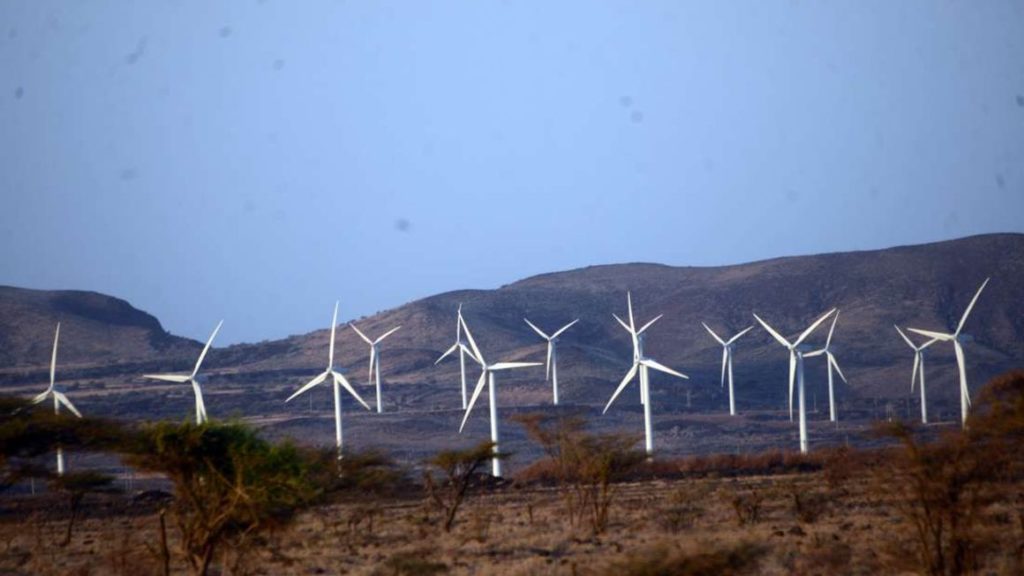The Turbines of the 310MW Lake Turkana Wind Power project in Laisamis Constituency Marsabit County. FILE PHOTO | NMG Kenya Power has rationed the amount of electricity it can take from producers, citing a slump in demand from months of economic lockdown on account of measures to slow down the spread of Covid-19
Electricity consumers in Kenya are paying higher prices after production cuts hit the Lake Turkana Wind Power, raising the proportion of costly energy on the national grid.
Kenya Power has rationed the amount of electricity it can take from producers, citing a slump in demand resulting from months of economic lockdown on account of the Covid-19 pandemic.
The supply cuts have affected the running of the Turkana wind farm, where the turbines are engineered to rotate and produce power at optimal capacity as per wind speeds.
“The turbines are fitted with mechanisms that pitch and yaw to ensure maximum power is extracted. Naturally limiting the turbine from automatically managing the control mechanism from maximum extraction would lead to vibration on the blades and resistance on the gears,” said Jon Zaidi, the Lake Turkana Wind Power (LTWP) chief executive.
LTWP has been allocated a maximum production quota of 210MW, against an installed capacity of 310MW.
In July, the Turkana plant was hit by an operational outage of nearly two weeks.
Mr Zaidi did not confirm whether it was related to operational complications of the supply caps.
“This (limitation of output) could potentially reduce the lifespan of various components leading to additional maintenance. However, it is important to note that our turbines are fully equipped with technology that allows for adjustment should the need arise, and, during this period, this type of flexibility may be required,” said Mr Zaidi.
Kenya Power has prioritised the uptake of geothermal at 39.5 per cent, hydro at 33.9 per cent, wind at 14 per cent, diesel at 9.7 per cent with other sources like solar, imports from Uganda and co-generation accounting for about three per cent.
Main beneficiary This arrangement has meant that Kenya Electricity Generating Company (KenGen), which is the sole producer of geothermal and hydro, is the main beneficiary.KenGen has maintained a stable financial performance despite other generators, including independent power producers, taking a beating. In the half year ending December 2019, KenGen’s profitability doubled by 98 per cent to $74 million, from $37.5 million in the same period the previous year.LTWP, which has 20-year power purchase agreement with […]
